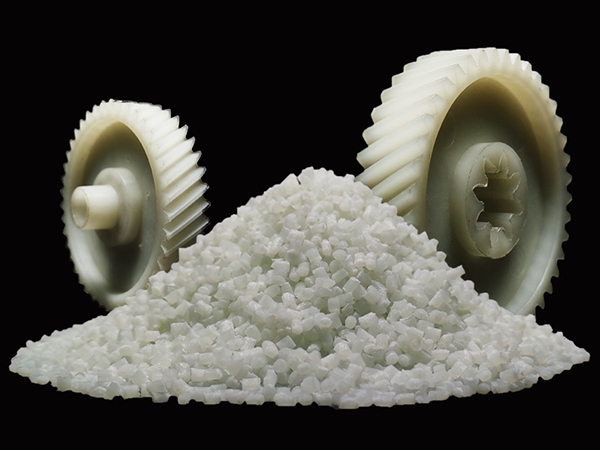New Fourth Board Listed Enterprise Stock Code891135
tel:
New Fourth Board Listed Enterprise Stock Code891135
tel:

PA66 plastic has a higher melting point in polyamide materials. It is a semi-crystalline-crystalline material. PA66 can maintain strong strength and rigidity even at higher temperatures. PA66 plastic still has hygroscopicity after molding, the degree of which mainly depends on the composition of the material, wall thickness and environmental conditions. In product design, the influence of moisture absorption on geometric stability must be considered. PA66 plastic has low viscosity, so it has good fluidity (but not as good as PA6). This property can be used to process very thin components. Its viscosity is very sensitive to temperature changes.
The shrinkage rate of PA66 is between 1%~2%. Adding glass fiber additives can reduce the shrinkage rate to 0.2%~1%. The shrinkage rate differs greatly in the direction of the flow and the direction perpendicular to the direction of the flow. The thermal properties of PA66 plastic, the melting point is the temperature at which the crystal melts. For the crystalline polymer PA66 plastic, it shows a clear melting point. According to the test method adopted, the melting point fluctuates in the range of 259~267℃. Generally, the melting point of PA66 plastic measured by differential thermal analysis is 264°C. If the temperature at which the volume expansion coefficient shows the maximum value is regarded as the melting point, the melting point temperature range of nylon-66 is 246~263℃. It is close to the theoretical melting temperature of 259°C. The injection characteristics of PA66 plastic. Drying treatment: If the material is sealed before processing, then there is no need to dry it. However, if the storage container is opened, it is recommended to dry it in hot air at 85°C. If the humidity is greater than 0.2%, vacuum drying at 105°C for 12 hours is required.

Melting temperature: 260~290℃. For glass additive products, the temperature is 275~280℃. The melting temperature should not be higher than 300°C.
Mold temperature: 80℃ is recommended. The mold temperature will affect the crystallinity, and the crystallinity will affect the physical properties of the product.
Thin-walled plastic parts, if the mold temperature is lower than 40℃, the crystallinity of the plastic parts will change with time. In order to maintain the geometric stability of the plastic parts, annealing treatment is required.
Injection pressure: usually 750~1250bar, depending on the material and product design.
Injection speed: high speed (slightly lower for reinforced materials).
Runner and gate: As the solidification time of PA66 is very short, the location of the gate is very important. The gate aperture should not be less than 0.5*t (where t is the thickness of the plastic part). If you use a hot runner, the gate size should be smaller than using a conventional runner, because the hot runner can help prevent premature solidification of the material. If a submerged gate is used, the minimum diameter of the gate should be 0.75mm. PA66 plastic application PA66 is the most mechanically strong and widely used variety in the PA series. Because of its high crystallinity, its rigidity and heat resistance are high.
In order to improve the mechanical properties of PA66, various modifiers are often added. Glass is the most common additive, and sometimes synthetic rubbers such as EPDM and SBR are added to improve impact resistance.


Mobile Site